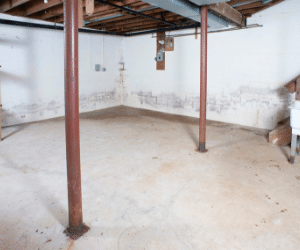What is the Clay Bowl Effect?

To build a basement it is necessary to dig a hole in the ground that is bigger than the actual basement. After building or pouring the floor and walls, the gap around the basement is backfilled with some of the excavated soil. This soil is never as hard-packed as the undisturbed terrain surrounding it. This looser soil will absorb more water than the compact surrounding soil, creating a "clay bowl effect."
Consequences of the “Clay Bowl Effect”
When the water from rain and snow melt over-saturates the backfilled soil, hydrostatic pressure builds up. The pressure will push the water against the foundation walls. Seeking relief the water will follow the path of least resistance and eventually find its way into the basement. Water often seeps in through the joint between the walls and floor. It can also come through cracks, old basement windows, pipe penetrations, and mortar joints. In cinderblock walls, water also tends to accumulate inside the hollow bricks. Factors such as poor foundation or yard drainage will aggravate the problem.

In a few cases, foundations intrude upon layers of natural bedrock and stand in the way of natural underground water paths. Water will seek an alternative route, and that often means leaking into to the interior of your basement.
Keeping Basements Dry
To counteract the effects of over-absorbent soils around your foundation and prevent a leaky basement, you need an effective basement drainage system. We understand basements and have developed a suite of products to keep basements dry. Our network of nationwide Basement Systems dealers are trained and certified in inspection, diagnosis and installation of a full range of proven waterproofing products.
